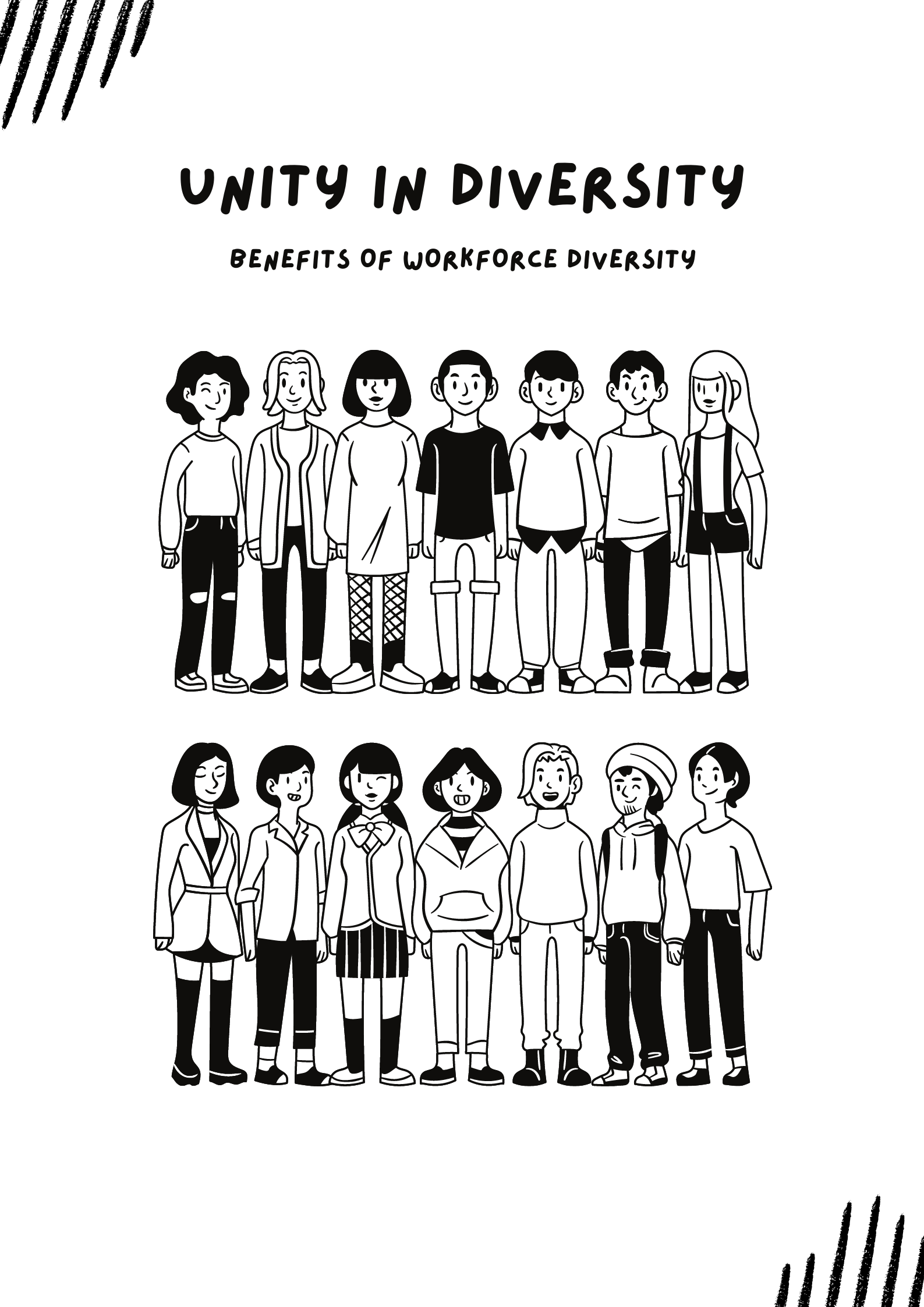What is Workforce Diversity?
Respecting and recognizing each person’s abilities and capabilities to the company is vital to workplace diversity. A diverse workforce fosters inclusion by providing equal rights and opportunities to all employees, regardless of gender, race, or age, and physical ability, ethnicity, sexual orientation, convictions, and other factors.
Employers in numerous countries are legally required to provide equal opportunities to their employees and maintain an atmosphere free of harassment and discrimination. Every employee from various backgrounds and cultures brings a unique viewpoint and new ideas to the table. When these ideas are articulated, they are done so in collaboration with and for the well-being of an organization. One of the most significant advantages of hiring a varied group of employees is that they are more imaginative and willing to think outside the box, which is advantageous to a corporation.
Advantage of Diverse Workforce
Increased Creativity
When people from many cultures and backgrounds collaborate, the opportunity to be more creative automatically increases. As a result, there are more people with diverse perspectives and views on solving problems, which means there is a better chance of finding a viable solution to a problem that workers encounter. Workplace diversity can also help improve creativity by stifling imagination and originality if you only hire people from varied groupings, people with different perspectives, cultures, and socioeconomic conditions and perspectives. On the other hand, employees with various backgrounds will develop a variety of techniques to achieve an end-to-end goal.
Increased Productivity
Diverse workforces enable more ideas and procedures to be developed. This diversity of talent results in a workforce with more skills and a more comprehensive range of experience and perspectives, increasing productivity. Diversity in the workplace not only fosters innovation but also boosts productivity. This is due to the fact that creativity boosts productivity. The more you diversify your workforce, the more diversified your thinking and ideas become, the more diverse your team becomes.
Cultural Awareness
A miscellaneous group of employees from many cultures can assist businesses in dealing with the complexities of the global market. For example, employing a worker who speaks Mandarin, if a company does business with China, is a plus and could lead to improved working relations. In addition, with a more culturally varied workforce, it’s not uncommon for employees to spend more time with people from cultures they’ve never met before. As a result, employees are taught new perspectives on culture, which helps to eliminate negative feelings such as racism, sexism, and other forms of discrimination.
A Positive Reputation
Companies with a diversified personnel pool are often thought to be better employers. The common observation is that employees want to work for a company that appreciates their employees and accepts people from all backgrounds. Initially, variety might assist you in connecting with the people around you. Finally, if you have a varied and inclusive workforce, it symbolizes the community you’re located in and, possibly, the community you serve. A national or international image of inclusion, on the other hand, could be a crucial component in gaining respect, both inside your sector and as a well-known brand.
Better Marketing Opportunities
When potential consumers or workers discern that a company employs diverse people, they feel more personally linked to the company. Advertising that portrays older and differently-abled people and ethnically diverse people encourages prospective employees to apply, improves the company’s reputation, raises market awareness, and develops an expanded client base.
Reduces Turnover
A corporation that encourages intercultural diversity in the workplace will attract a broader pool of individuals to fill job openings right away. Students who have had various experiences at university may believe that a diverse group is more innovative and is more likely to join. If a company has many applicants interested in a position, it will benefit from having a more significant number of applicants; the company will be spoiled for choice.
Innovation And Growth
The ability to look at a problem from various angles and seek answers defines the ability to be innovative. You’re more likely to get creative and original ideas if you’re working with a group of people who have varied talents, life experiences, and professional backgrounds. As a leader, you can tap into each team member’s strengths and put them to work towards a common goal. When multiple voices and personalities are combined, you get a completely different perspective on the topic at hand. This could boost your efficiency and provide you a competitive advantage. Additionally, you’ll have access to a larger pool of talent. For example, one of your team members could be a genius at conceptualizing ideas, while another has the expertise and understanding to put them into a plan of action.
Conclusion
Businesses should utilize the talents of people who are aware of the needs and meet the expectations of a developing assorted, complex society of consumers. When individuals are welcomed, heard, and cherished in a friendly workplace, they become incredible assets for the place. As a leader, you should set priorities for diversity, employee engagement, and empowerment. A diversity and inclusion strategy will promote knowledge sharing, reduce attrition, and increase loyalty. To attain these goals, make sure that everyone’s voice is heard and show your staff that you care about their heritage and customs. You can also organize inclusive awareness events or training efforts that emphasize prosperity and inclusion.









